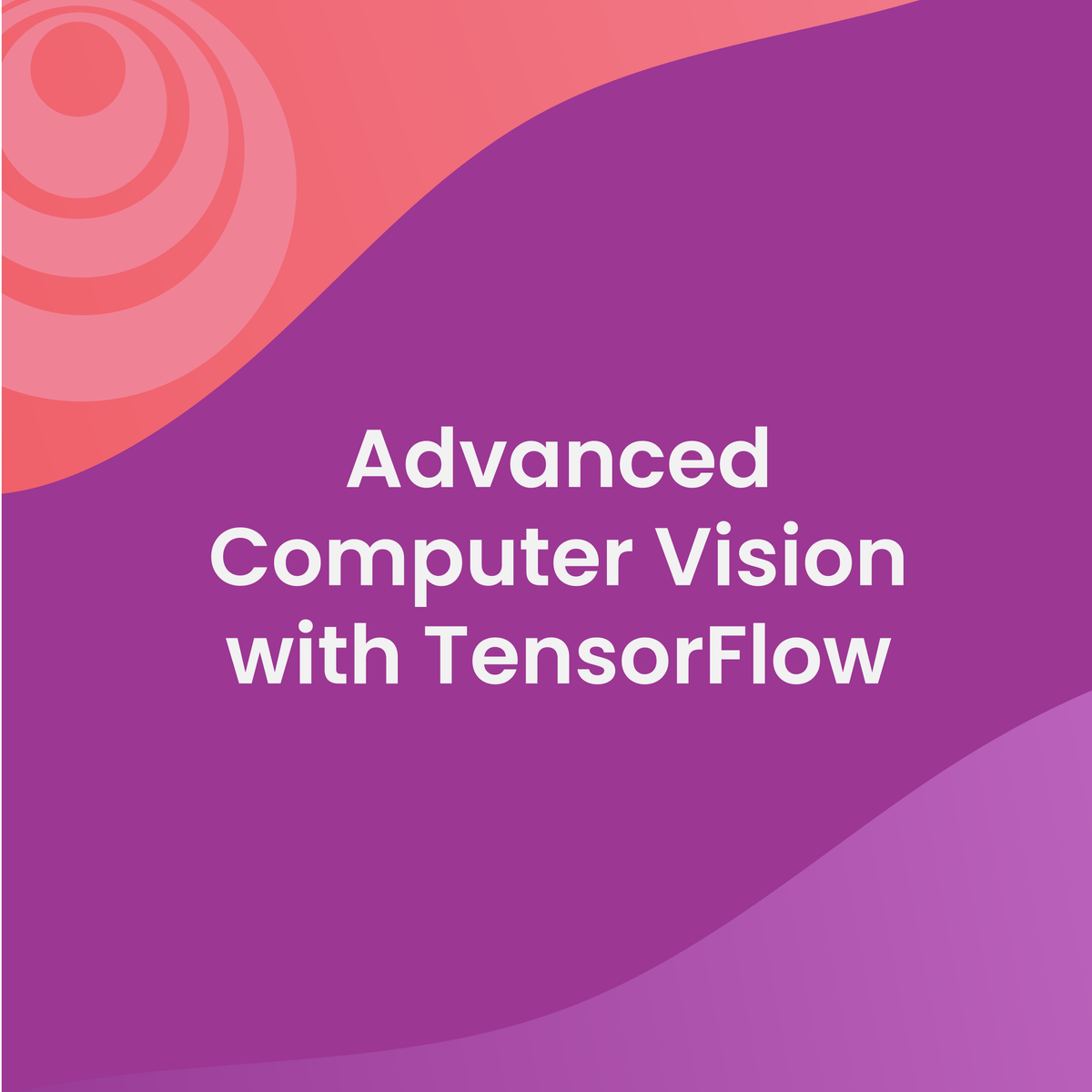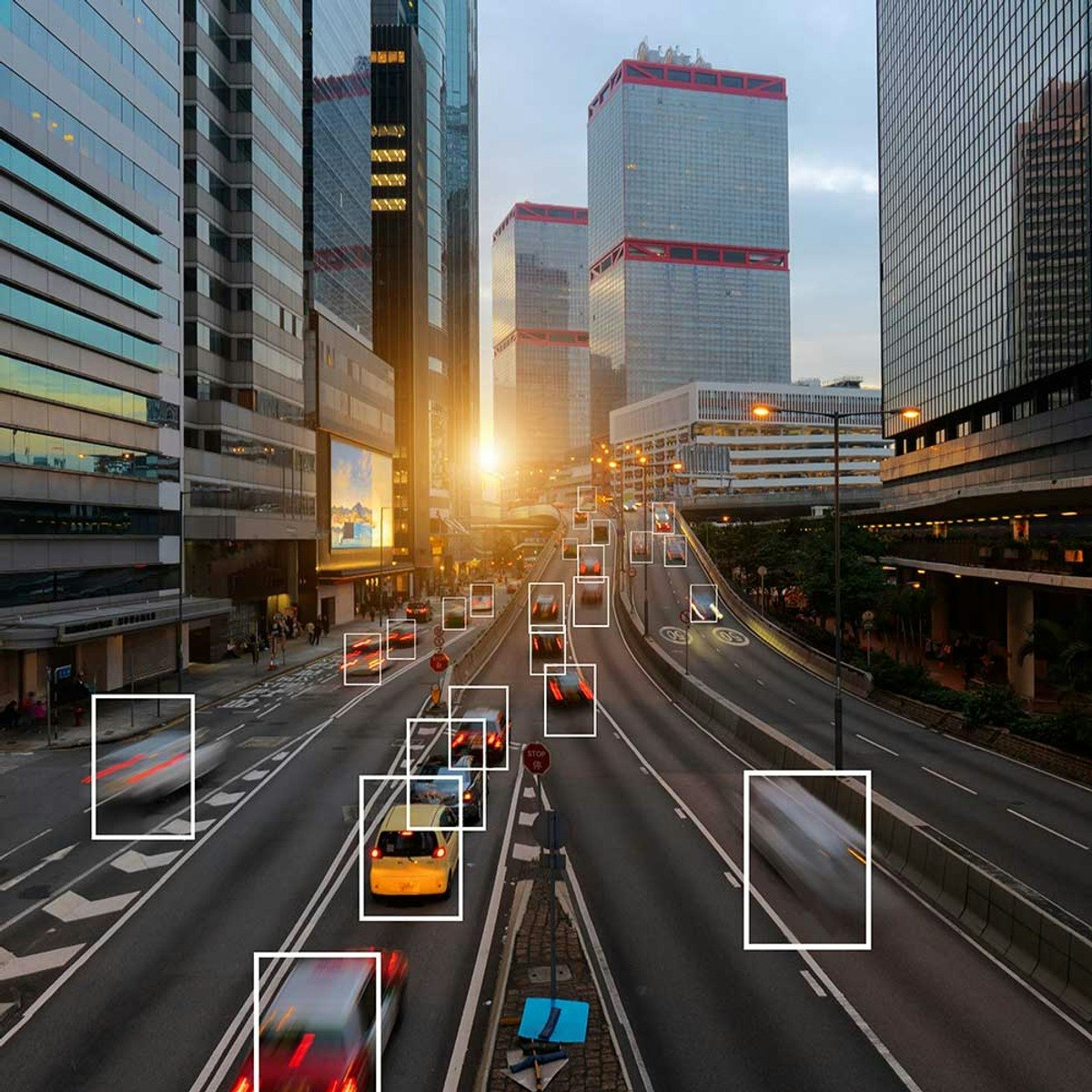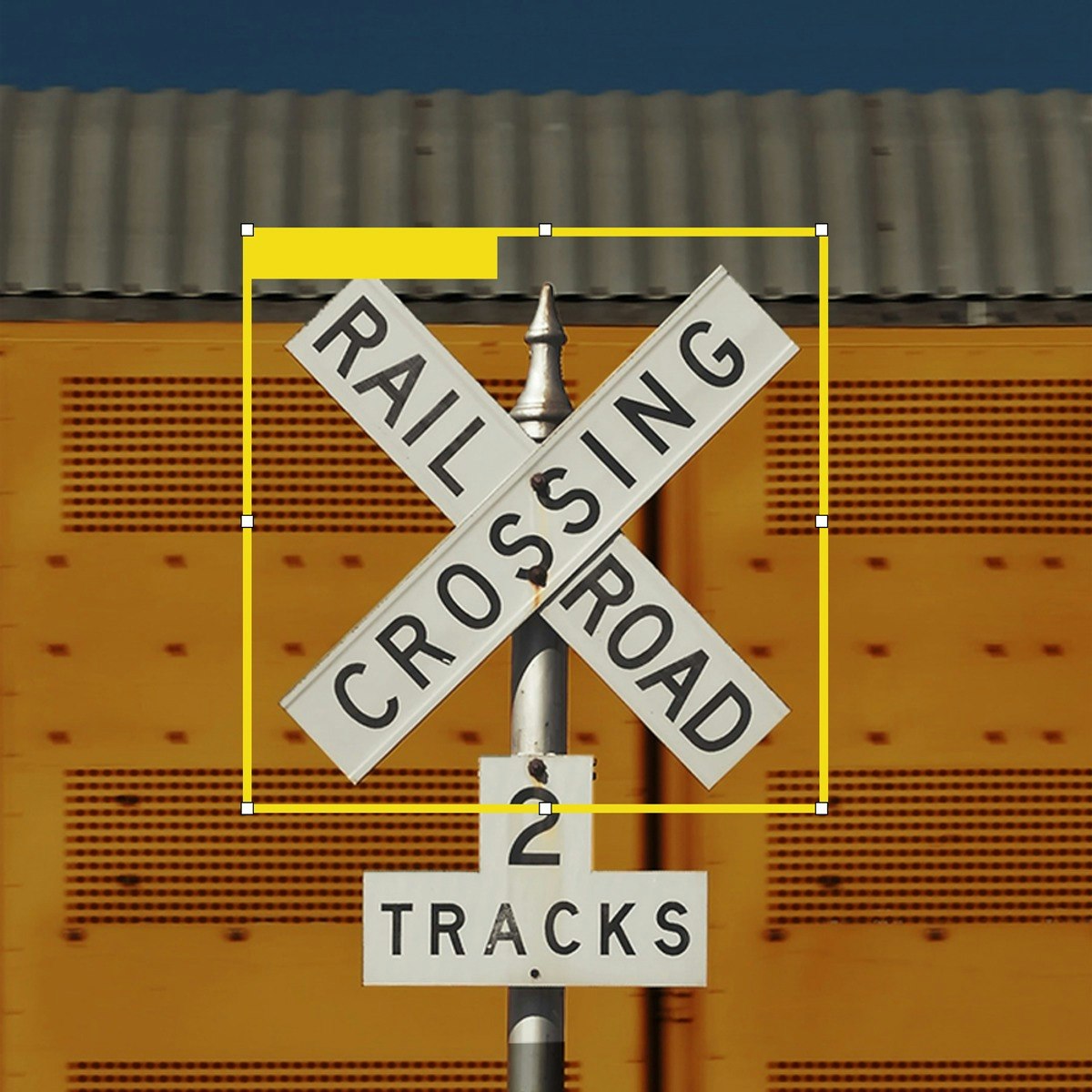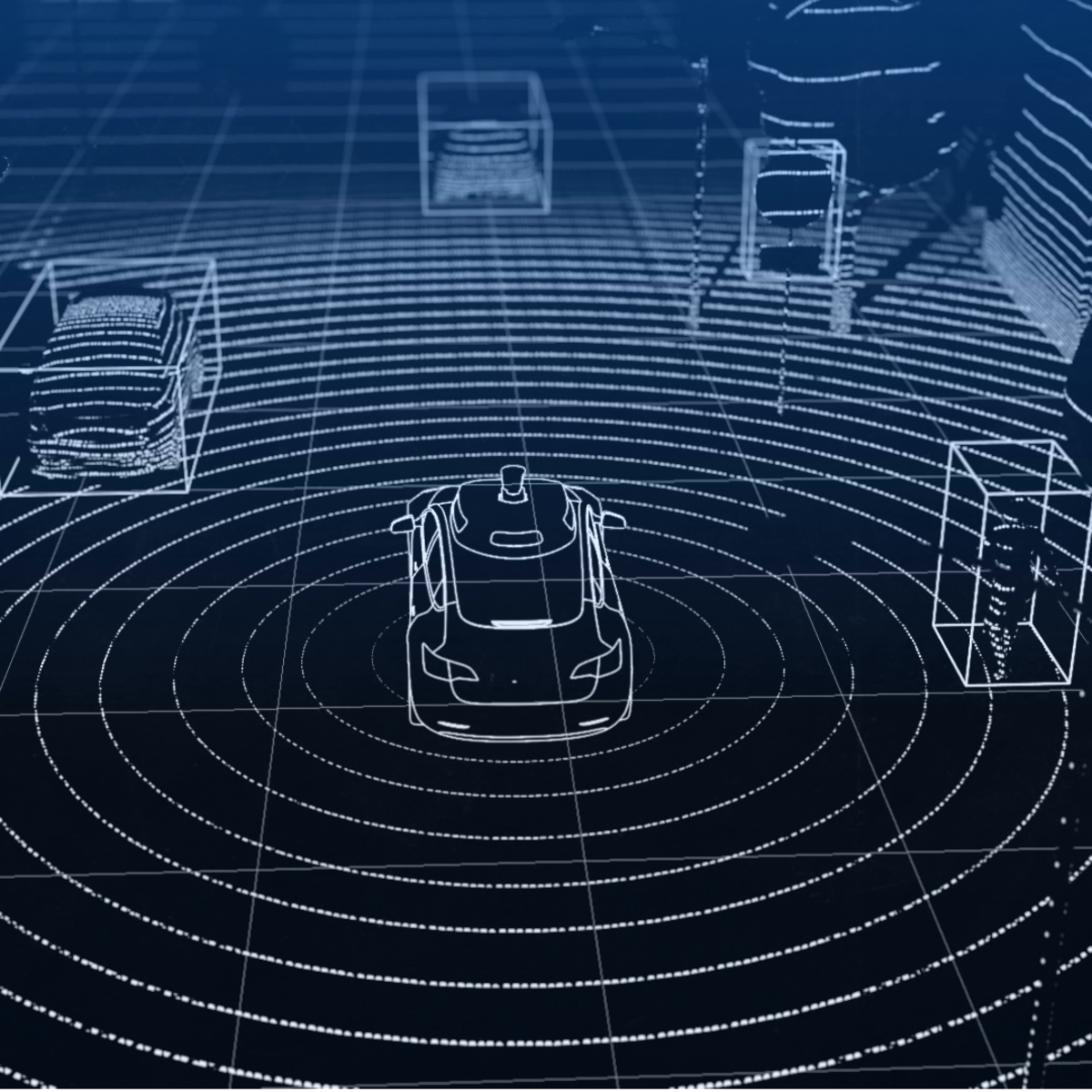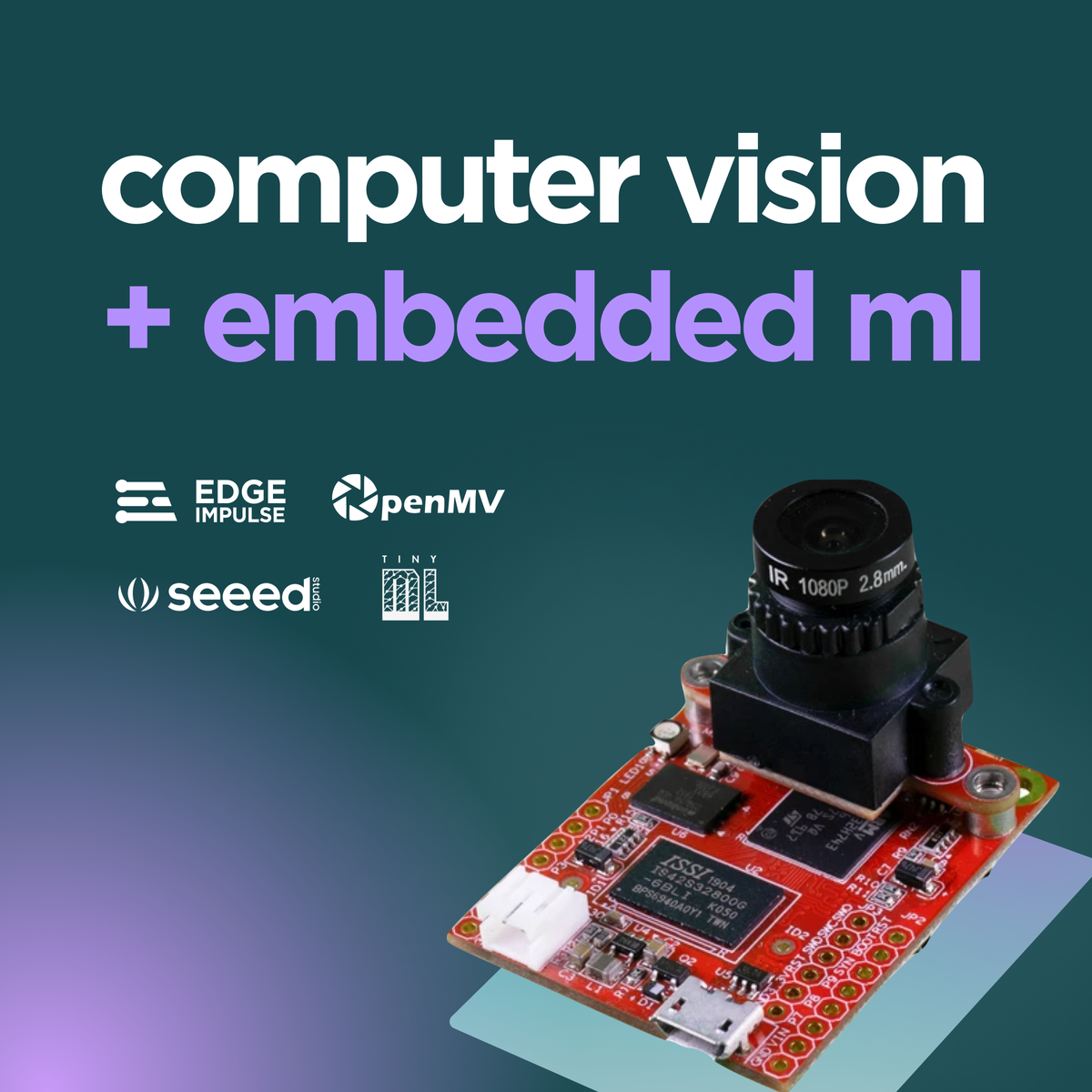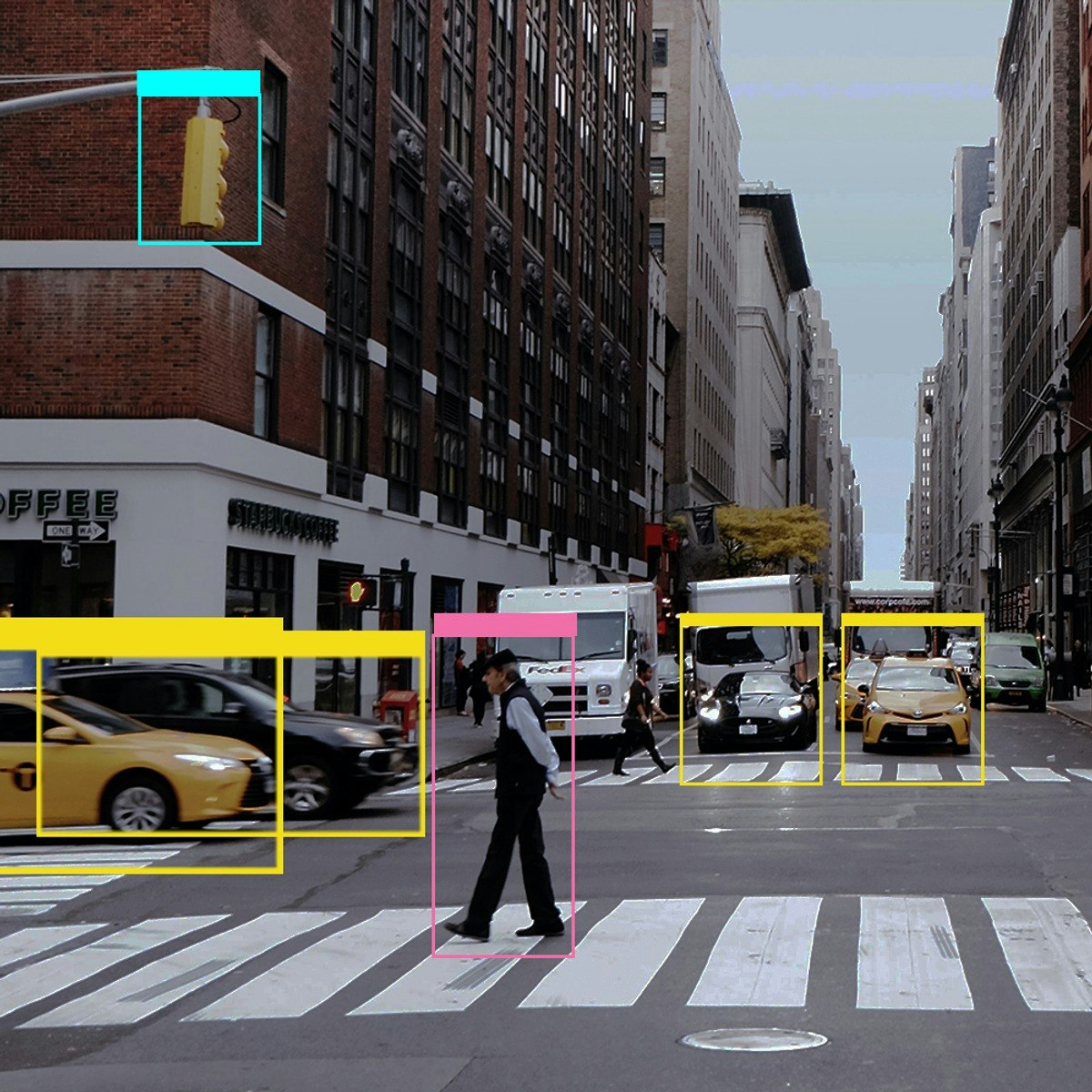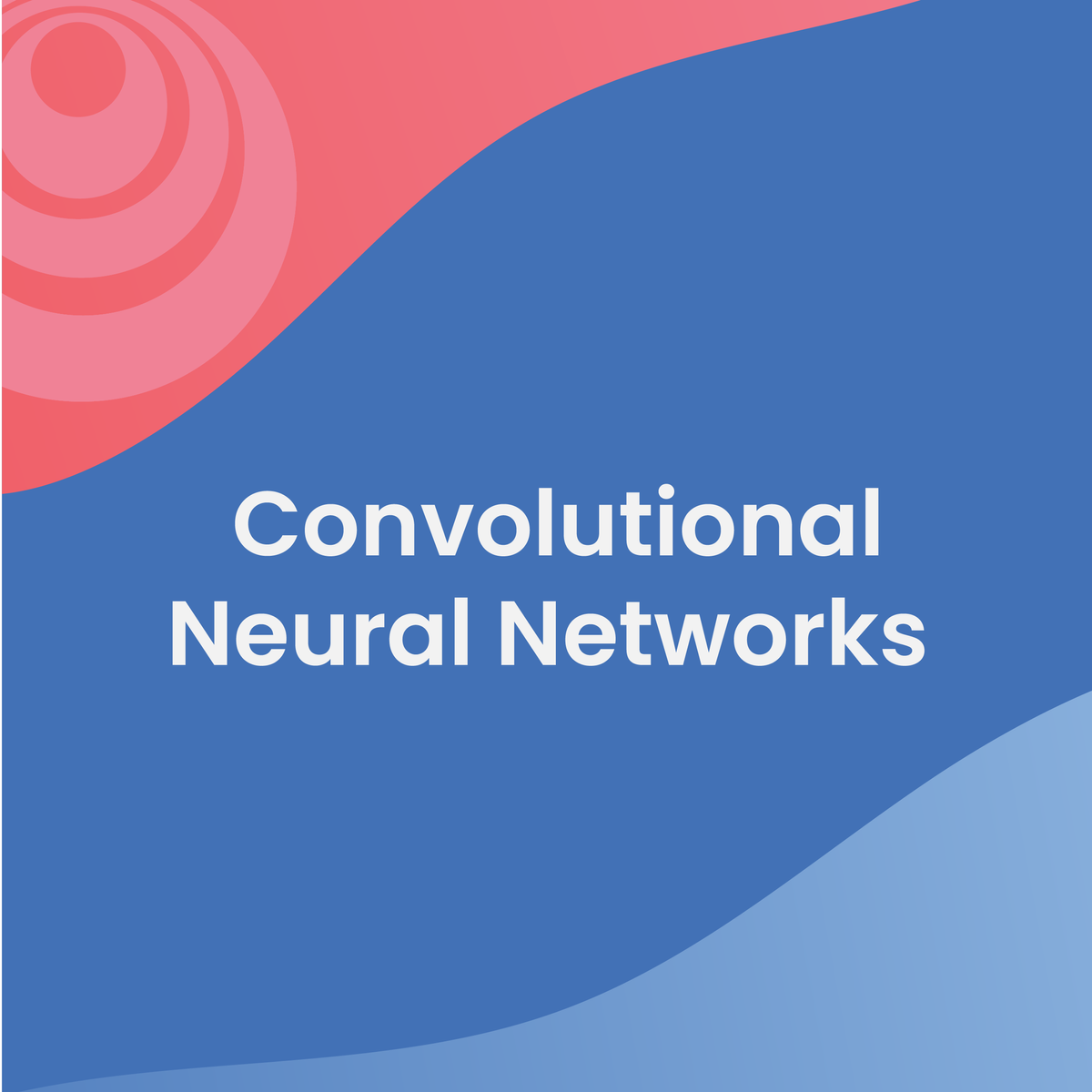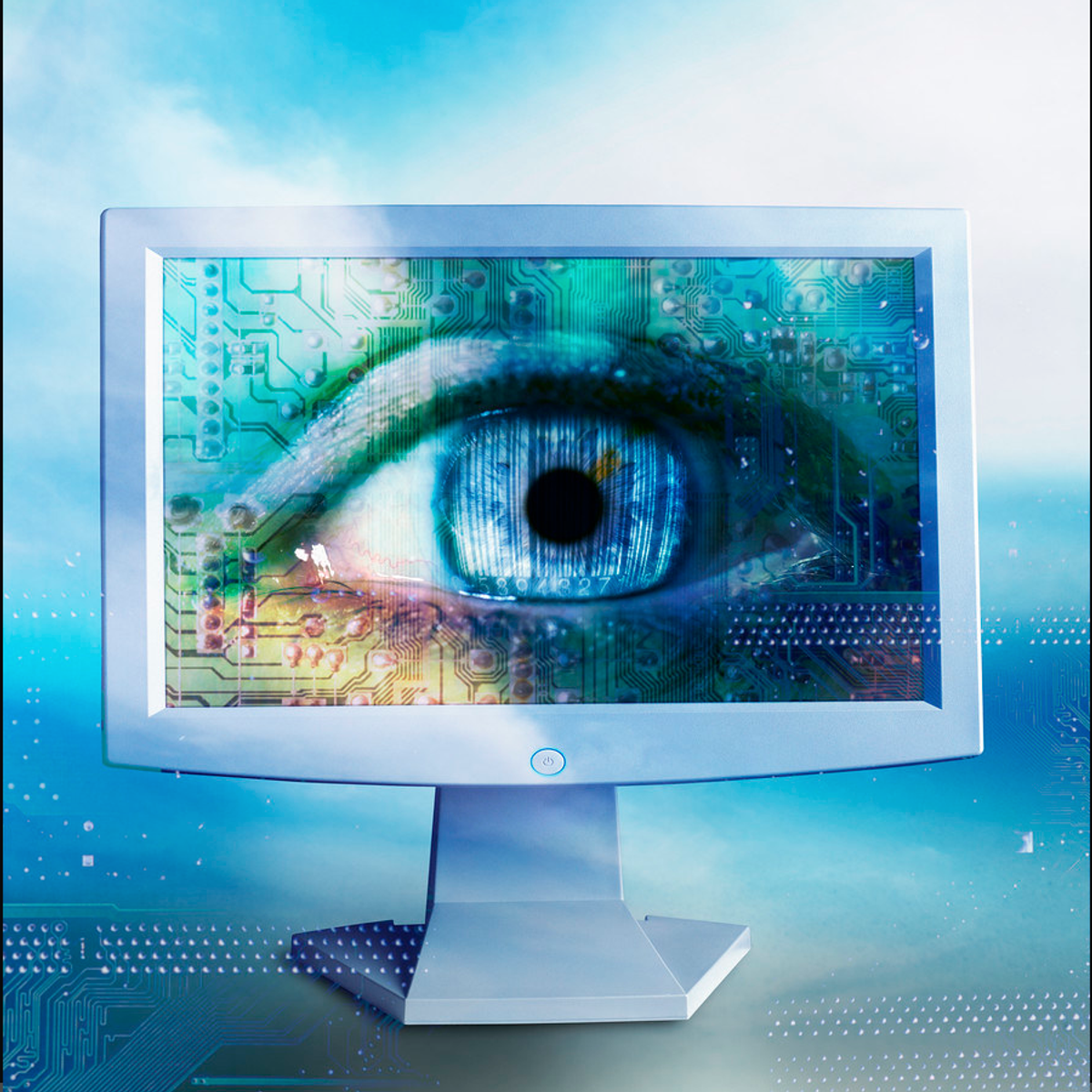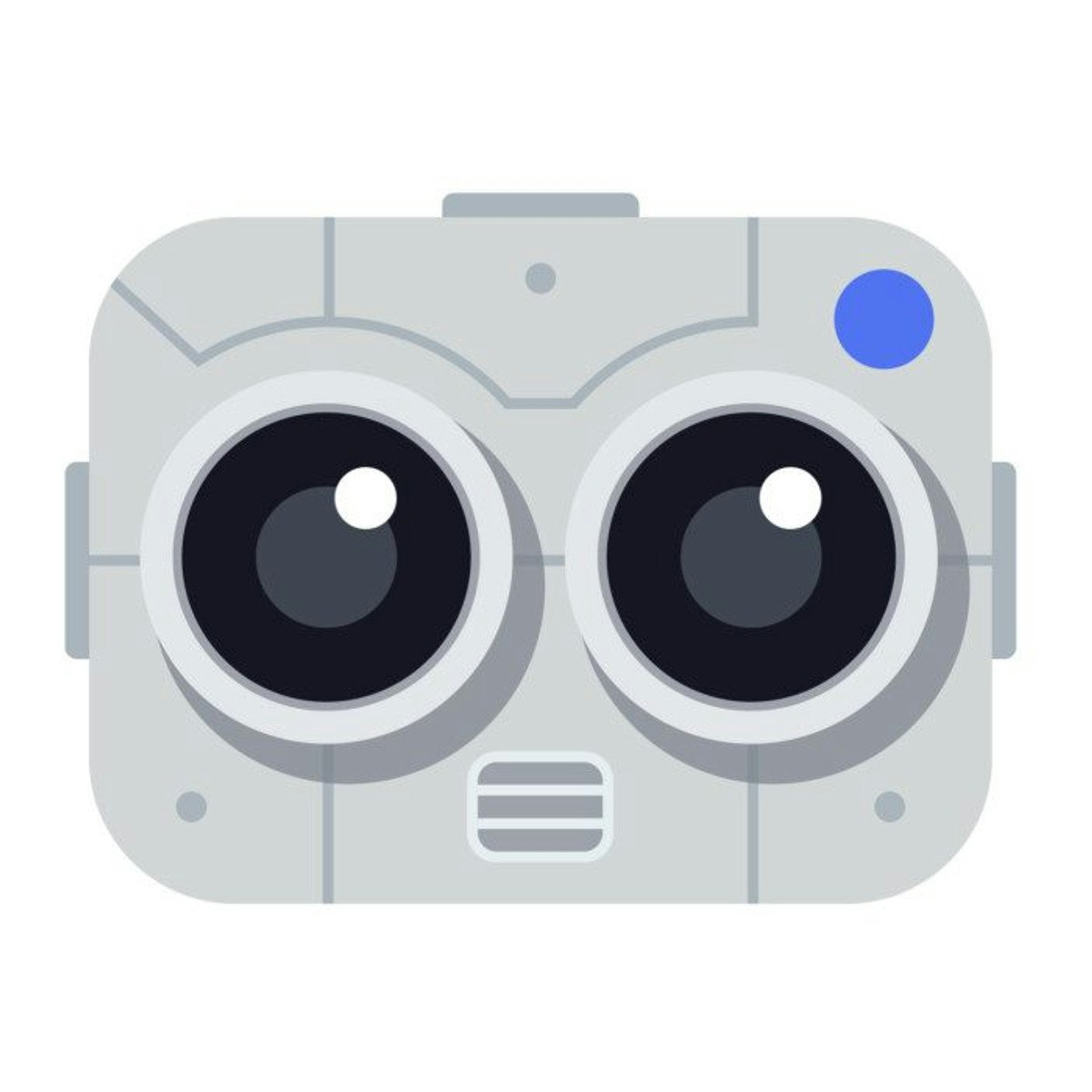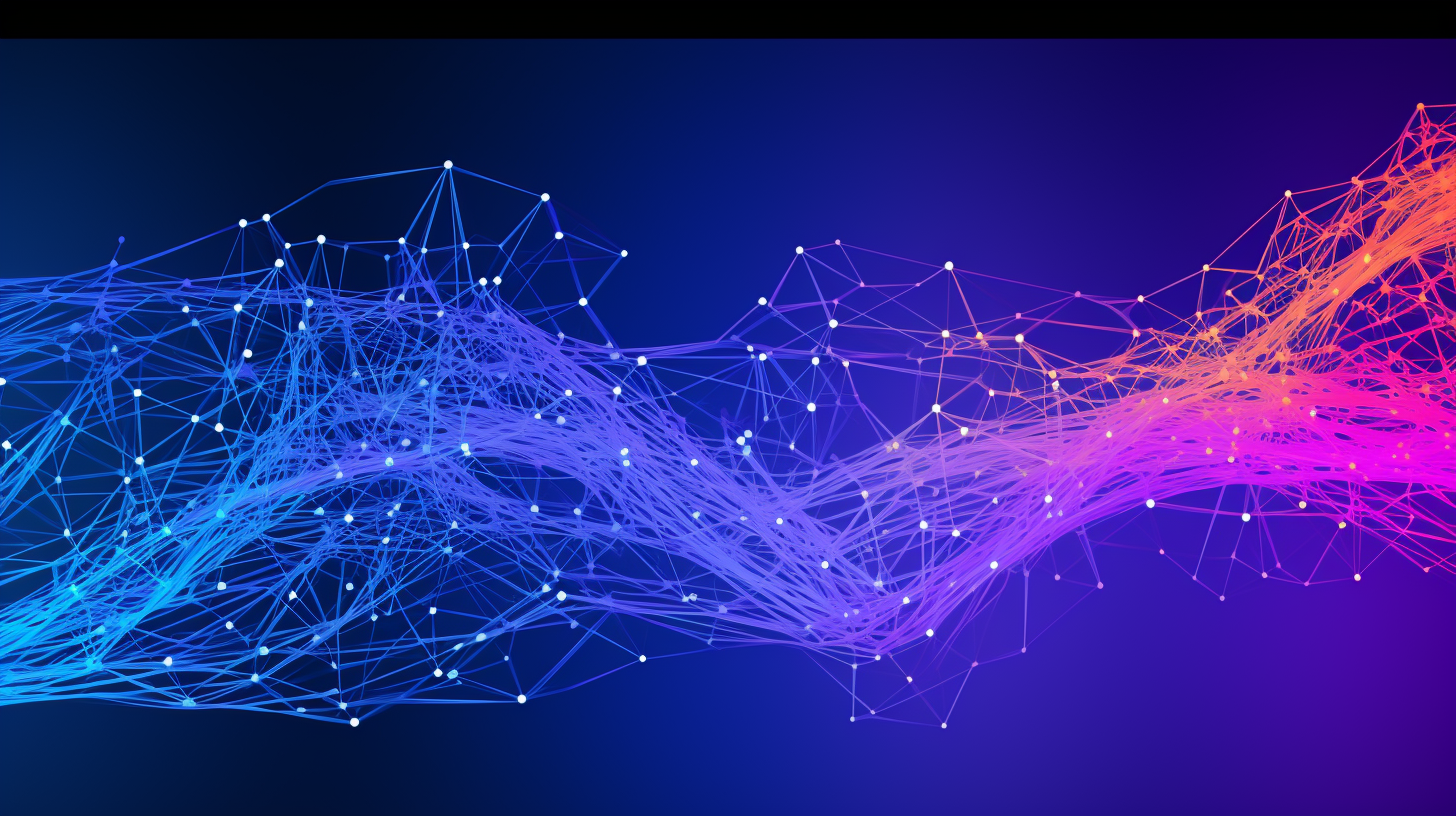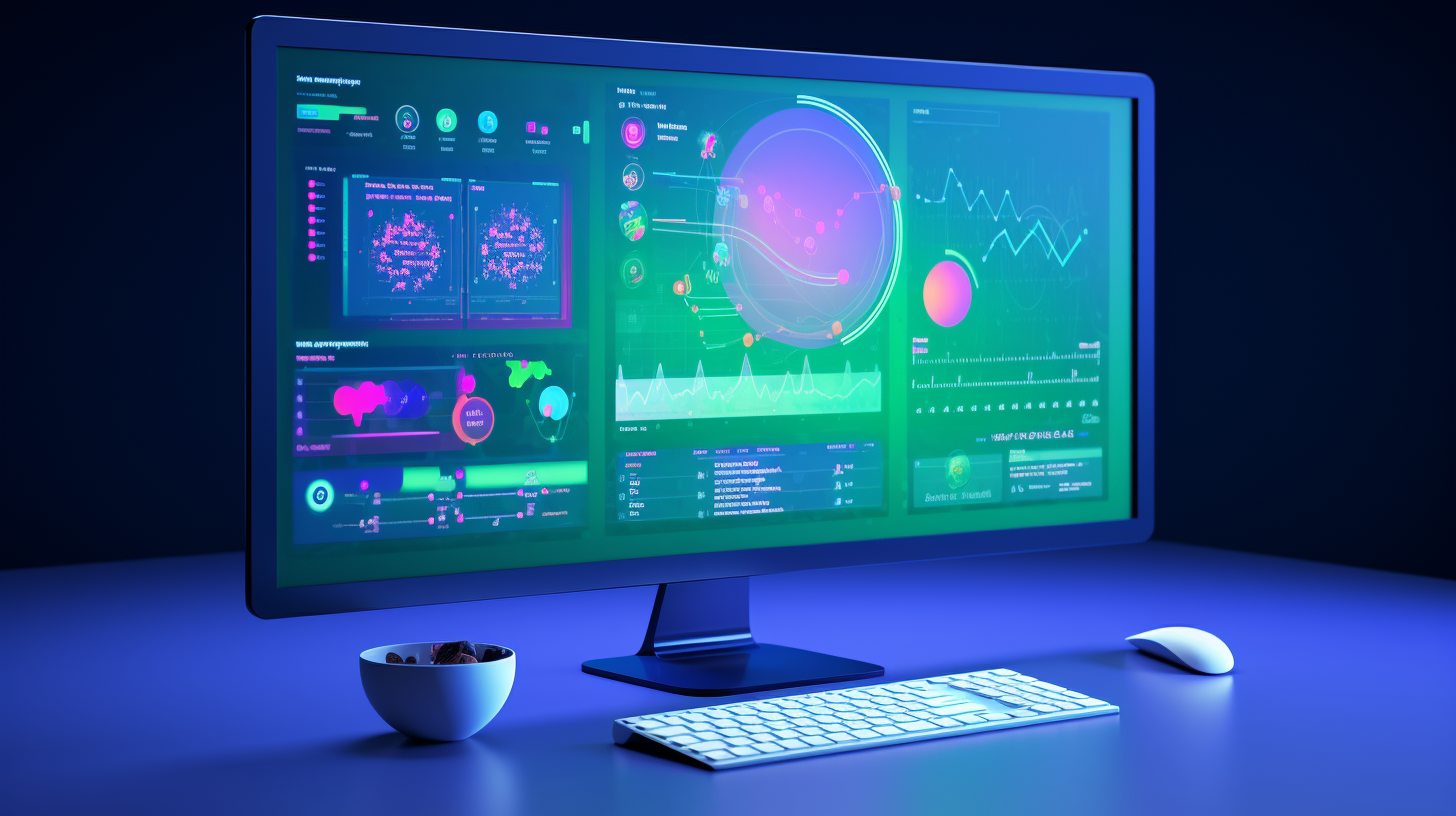Object Detection
vigating the World of Object Detection Object detection, at its core, is a field within computer vision and image processing focused on identifying and locating objects within an image or video. Imagine looking at a photograph; your brain effortlessly distinguishes between a car, a tree, and a person, and knows where each is situated. Object detection aims to empower computers with a similar capability: to not only say "this image contains a car" but to also pinpoint "the car is here." This technology forms a fundamental building block for a vast array of applications, enabling machines to "see" and interpret their surroundings in a way that was once the sole domain of human (and animal) perception. The allure of working in object detection often stems from its direct impact on cutting-edge technologies. Consider the thrill of developing systems that allow autonomous vehicles to navigate complex urban environments by identifying pedestrians, other vehicles, and traffic signals. Or picture contributing to advancements in medical imaging, where object detection algorithms can assist doctors in identifying anomalies or tumors in scans, potentially leading to earlier diagnoses and improved patient outcomes. Furthermore, the field is dynamic and constantly evolving, offering continuous learning opportunities and the chance to work on problems that push the boundaries of artificial intelligence. For those new to the concept, object detection might sound like a highly abstract or niche area. However, its principles are surprisingly intuitive. If you've ever used a social media platform that automatically suggests tagging friends in a photo, you've interacted with a form of object detection (specifically, face detection). Similarly, automated checkout systems in some retail stores that can "see" and identify items in your cart are another practical application. These examples highlight how object detection is increasingly integrated into our daily lives, often in subtle yet powerful ways.
Introduction to Object Detection
Embarking on a journey into object detection requires understanding its fundamental principles and how it relates to broader concepts in computer science and artificial intelligence. This section aims to provide that foundational knowledge, making the field accessible even if you're just starting to explore its possibilities.What is Object Detection? Unveiling the Core Concepts
Object detection is a computer technology that deals with identifying instances of semantic objects of a certain class (like humans, cars, or buildings) in digital images and videos. Essentially, the goal is to answer two main questions: "What objects are present?" and "Where are they located?". This involves not just recognizing that an object exists in an image, but also drawing a "bounding box" – a rectangle – around each detected object to indicate its precise position and extent. Think of it like this: you're looking at a picture of a busy street. Your eyes and brain work together to instantly identify cars, pedestrians, traffic lights, and buildings. Object detection algorithms aim to replicate this process for a computer. The computer "looks" at the pixels of an image and, based on patterns it has learned, identifies regions that correspond to specific objects it has been trained to recognize. This process is a form of pattern recognition. Models don't "understand" objects in the human sense; rather, they learn to associate specific visual features—combinations of colors, shapes, textures, and their spatial relationships—with particular object categories. For instance, an algorithm trained to detect cars learns the typical shapes, the presence of wheels, windows, and other characteristic features that, when present in a certain configuration, indicate a high probability of a car being in that part of theimage.Distinguishing Object Detection from Image Classification
It's common for newcomers to confuse object detection with image classification, a related but distinct task in computer vision. Image classification aims to assign a single label to an entire image. For example, an image classification model might look at a picture and determine "this is an image of a cat" or "this image depicts a beach scene." It tells you *what* is in the image overall, but not necessarily *where* specific things are within that image, especially if multiple objects are present. Object detection, on the other hand, goes a step further. It not only classifies objects but also localizes them by drawing bounding boxes around each instance. So, for the same image of a cat playing with a ball in a garden, an object detection model would ideally output: "cat (at these coordinates), ball (at these coordinates)." If there were two cats, it would identify and locate both. Image classification provides a holistic label, while object detection provides more granular information about individual object instances and their locations. Another related concept is object localization. This task focuses on identifying the location of a *single*, primary object in an image and drawing a bounding box around it. Object detection can be seen as an extension of localization, as it typically involves localizing *multiple* objects of various classes within the same image. Finally, image segmentation is even more detailed, aiming to classify each pixel in an image, essentially outlining the exact shape of objects rather than just drawing a rectangular bounding box.Everyday Analogies: Making Object Detection Relatable
To make object detection even more tangible, let's consider some real-world analogies. Imagine you're a librarian tasked with quickly finding all the red books on a particular shelf. Your eyes scan the shelf (the image), you identify objects that are book-shaped and red (classification), and you mentally (or physically) note their positions (localization). This is akin to what an object detection system does. Another analogy is playing a game of "I Spy." When someone says, "I spy with my little eye something round and orange," your brain starts searching the visual scene for objects that fit that description (a ball, an orange, a specific toy). Once you find it, you can point to its location. Object detection algorithms perform a similar search, albeit using mathematical features and learned patterns instead of human intuition. Consider security cameras in a store. Older systems might just record video. Modern systems with object detection can actively identify when a person enters a restricted area, or count the number of shoppers, or even detect unusual behavior. This is possible because the system isn't just capturing pixels; it's interpreting the visual data to identify and locate relevant "objects" (people, items) based on its training.A Glimpse into its Origins
The quest to enable machines to "see" and interpret objects dates back several decades, with early explorations in computer vision laying the groundwork in the 1960s and 1970s. These initial efforts often relied on simpler techniques like template matching (sliding a small image of an object across a larger image to find matches) and edge detection (identifying boundaries of objects). While foundational, these early methods struggled with variations in object scale, orientation, lighting, and cluttered backgrounds. A significant early milestone was the Viola-Jones algorithm, introduced in 2001, which provided a robust and real-time method for face detection.Historical Evolution of Object Detection
The journey of object detection from its rudimentary beginnings to the sophisticated deep learning models of today is a fascinating story of innovation, driven by breakthroughs in algorithms, increases in computational power, and the availability of large datasets. Understanding this evolution provides valuable context for anyone looking to delve deeper into the field.From Rule-Based Systems to the Dawn of Deep Learning
In the early days, object detection often relied on handcrafted features and rule-based systems. Researchers would manually define features they believed were characteristic of certain objects. For example, to detect a face, rules might be based on the expected relative positions of eyes, nose, and mouth. Techniques like the Viola-Jones algorithm, which used Haar-like features and a cascade of classifiers, were groundbreaking for their time, enabling real-time face detection. Another important early approach involved Histogram of Oriented Gradients (HOG) features, often combined with Support Vector Machines (SVMs), which proved effective for tasks like pedestrian detection. These methods, while significant, had limitations. They often struggled with the vast variability of object appearances in real-world scenarios – changes in lighting, viewpoint, occlusion (objects being partially hidden), and deformation. Handcrafting features that could robustly handle all these variations was an immense challenge. The turning point came with the resurgence of neural networks and the advent of deep learning, particularly Convolutional Neural Networks (CNNs). Around 2012, with the success of AlexNet in the ImageNet Large Scale Visual Recognition Challenge (ILSVRC), the potential of CNNs to automatically learn hierarchical features directly from data became evident. This ability to learn relevant features, rather than relying on manually designed ones, revolutionized not just image classification but also, shortly thereafter, object detection.Landmark Algorithms: R-CNN, YOLO, and their Progeny
The application of deep learning to object detection led to a series of breakthrough algorithms. One of the first highly influential deep learning-based object detection frameworks was the Region-based Convolutional Neural Network (R-CNN), proposed by Ross Girshick and colleagues. R-CNN took a multi-stage approach: first, it generated a set of candidate object regions (region proposals) using techniques like Selective Search. Then, each of these regions was fed into a CNN to extract features, which were subsequently used to classify the object and refine its bounding box. While R-CNN significantly improved accuracy, it was slow due to the need to process thousands of region proposals independently. Subsequent innovations aimed to improve both speed and accuracy. Fast R-CNN improved upon R-CNN by sharing computation for feature extraction across all region proposals. Faster R-CNN took this a step further by introducing a Region Proposal Network (RPN), a small neural network that learned to generate high-quality region proposals directly, making the entire object detection pipeline more integrated and efficient. These are often referred to as "two-stage detectors" because they first propose regions and then classify objects within those regions. A different family of algorithms, known as "single-stage detectors" or "one-stage detectors," emerged, aiming for even faster inference speeds, making them suitable for real-time applications. The most prominent among these is YOLO (You Only Look Once). YOLO, introduced by Joseph Redmon et al., framed object detection as a single regression problem, directly predicting bounding box coordinates and class probabilities from the full image in one pass through the network. This made YOLO incredibly fast. Another popular single-stage detector is the Single Shot MultiBox Detector (SSD), which also predicts objects of varying scales in a single pass. Over the years, numerous variants and improvements to both R-CNN-based and YOLO-based architectures have been developed, continually pushing the state of the art.The Role of Hardware and Datasets in Advancing the Field
The rapid progress in object detection algorithms would not have been possible without parallel advancements in hardware, particularly Graphics Processing Units (GPUs). Training deep neural networks is computationally intensive, requiring massive numbers of calculations. GPUs, with their parallel processing capabilities, proved to be exceptionally well-suited for these tasks, dramatically reducing training times and enabling the development of much larger and more complex models. Equally crucial has been the availability of large-scale, high-quality annotated datasets. Datasets like PASCAL VOC (Pattern Analysis, Statistical Modelling and Computational Learning Visual Object Classes) and COCO (Common Objects in Context) provide tens of thousands to hundreds of thousands of images with meticulously labeled objects, including their classes and bounding boxes. These datasets serve as benchmarks for training and evaluating object detection models, fostering healthy competition and driving progress within the research community. Without such datasets, training robust and accurate deep learning models for object detection would be infeasible.Evolution of Evaluation: How We Measure Success
As object detection models became more sophisticated, so did the methods for evaluating their performance. Simply counting the number of correctly identified objects isn't enough; we also need to consider how accurately they are localized. A key metric used is Intersection over Union (IoU). IoU measures the overlap between the predicted bounding box generated by the model and the ground-truth bounding box (the manually labeled correct box). It's calculated as the area of intersection divided by the area of union of the two boxes. A higher IoU indicates a better localization. Based on a chosen IoU threshold (e.g., 0.5), detections are classified as True Positives (TP - correct detection and localization), False Positives (FP - incorrect detection, or detection of a non-existent object), or False Negatives (FN - a missed object). From these, metrics like Precision (the proportion of correct positive detections among all positive detections made) and Recall (the proportion of actual positive objects that were correctly detected) are calculated. Often, a single metric called mean Average Precision (mAP) is used to summarize the overall performance of an object detector across multiple object classes and varying IoU thresholds. mAP calculates the average precision across all recall values. The evolution of these metrics has allowed for more nuanced and standardized comparisons between different object detection approaches, guiding research towards models that are not only accurate in classification but also precise in localization.For those interested in exploring the fundamental algorithms that power modern object detection, these courses offer a solid starting point.
These books provide a comprehensive theoretical understanding of computer vision and the mathematical principles behind object detection techniques.
Technical Foundations of Object Detection
To truly grasp object detection, it's essential to understand its underlying technical components, the common architectures employed, the datasets that fuel its development, and the metrics used to evaluate its performance. This section delves into these crucial aspects.Core Tasks: Classification and Localization Revisited
At its heart, object detection performs two primary tasks simultaneously: classification and localization. As previously discussed, classification involves determining the category of an object (e.g., "car," "person," "dog"). Localization, in the context of object detection, means identifying the spatial extent of that object, typically by defining a rectangular bounding box around it. Imagine a self-driving car's perception system. It doesn't just need to know that there's a "pedestrian" somewhere nearby; it needs to know *precisely* where that pedestrian is located to make safe driving decisions. The bounding box provides this crucial location and size information. The output of an object detection model is usually a list of detected objects, each with a class label (what it is), a confidence score (how sure the model is about its detection), and the coordinates of its bounding box (where it is). This dual nature is what distinguishes object detection from simpler tasks like image classification, which only provides the "what," or basic object localization which might only find one object. The challenge lies in performing both accurately and efficiently for potentially many objects in a single image or video frame.Architectural Choices: Single-Stage vs. Two-Stage Detectors
Modern object detection algorithms, predominantly based on deep learning, can be broadly categorized into two main architectural approaches: two-stage detectors and single-stage detectors. Two-stage detectors, as the name implies, break the problem down into two distinct steps. The first stage involves generating a sparse set of candidate object regions, often called "region proposals." These are areas in the image that are likely to contain an object. Early methods used traditional computer vision techniques for region proposal, while later models like Faster R-CNN integrated a learnable Region Proposal Network (RPN) into the deep learning architecture. In the second stage, these proposed regions are then passed to a classifier and a regressor to determine the object class and refine the bounding box coordinates. Examples of two-stage detectors include the R-CNN family (R-CNN, Fast R-CNN, Faster R-CNN, Mask R-CNN). Generally, two-stage methods are known for achieving high detection accuracy but can be slower due to their multi-step process. Single-stage detectors, in contrast, perform object detection in a single pass through the neural network. They directly predict the class probabilities and bounding box coordinates from the input image without a separate region proposal step. This makes them significantly faster and often more suitable for real-time applications where speed is critical, such as in autonomous vehicles or live video analysis. Prominent examples of single-stage detectors include YOLO (You Only Look Once) and SSD (Single Shot MultiBox Detector). While initially, single-stage detectors sometimes lagged behind two-stage detectors in terms of accuracy, advancements in their architectures have narrowed this gap considerably, with many modern single-stage models offering an excellent balance of speed and accuracy. The choice between a single-stage and a two-stage detector often depends on the specific application requirements. If maximum accuracy is paramount and inference speed is less of a concern (e.g., in some medical imaging analysis), a two-stage detector might be preferred. If real-time performance is essential, a single-stage detector is often the more practical choice.Fueling the Models: Common Datasets
The success of deep learning-based object detection is heavily reliant on the availability of large, high-quality, and meticulously annotated datasets. These datasets provide the "experience" from which the models learn to identify and localize objects. Some of the most widely used and influential datasets in the field include: PASCAL VOC (Visual Object Classes): This was one of the pioneering datasets that significantly drove research in object detection. It contains images with 20 object categories, along with bounding box annotations. The PASCAL VOC challenges, which ran for several years, were instrumental in benchmarking progress. COCO (Common Objects in Context): The COCO dataset is a large-scale object detection, segmentation, and captioning dataset. It features images with 80 object categories and is significantly larger and more complex than PASCAL VOC. COCO is known for its more challenging scenarios, including images with many small objects and complex scenes, making it a standard benchmark for modern object detection models. Its evaluation metrics are also widely adopted. ImageNet: While primarily known for image classification, the ImageNet dataset also has an object detection component as part of its Large Scale Visual Recognition Challenge (ILSVRC). The ILSVRC played a crucial role in demonstrating the power of deep learning for visual recognition tasks. These datasets, and others like them, not only provide the raw material for training models but also establish standardized evaluation protocols, allowing researchers to compare their methods fairly and track progress in the field. The effort involved in creating and annotating these datasets is immense, and they represent a vital community resource.Measuring What Matters: Key Performance Metrics
Evaluating the performance of an object detection model requires specialized metrics that can assess both the correctness of the classification and the precision of the localization. Key metrics include: Intersection over Union (IoU): As mentioned earlier, IoU quantifies how well a predicted bounding box aligns with the ground-truth bounding box. It's a value between 0 and 1, where 1 indicates a perfect match. A detection is typically considered a "true positive" if its IoU with a ground-truth box exceeds a certain threshold (e.g., 0.5). Precision and Recall:- Precision measures the accuracy of the positive predictions. It answers the question: "Of all the objects the model detected, how many were actually correct?" It's calculated as True Positives / (True Positives + False Positives).
- Recall (also known as sensitivity) measures the model's ability to find all relevant objects. It answers: "Of all the actual objects present in the image, how many did the model correctly detect?" It's calculated as True Positives / (True Positives + False Negatives).
To gain hands-on experience with the technical aspects of object detection, including model architectures and evaluation, these courses are highly recommended.
Delving into the practical implementation aspects can be further enhanced by studying books that cover the application of these techniques using popular libraries and frameworks.
Familiarizing yourself with broader topics in AI and machine learning will provide a richer context for understanding object detection.
Applications of Object Detection
Object detection is not just an academic pursuit; it's a technology with a wide and growing range of real-world applications across numerous industries. Its ability to identify and locate objects in images and videos translates into tangible benefits, from enhancing safety and efficiency to enabling entirely new products and services.Revolutionizing Transportation: Autonomous Vehicles
One of the most prominent and impactful applications of object detection is in the field of autonomous vehicles (self-driving cars). For a car to navigate safely without human intervention, it must have a comprehensive understanding of its surroundings. Object detection systems are crucial for identifying and tracking other vehicles, pedestrians, cyclists, traffic lights, road signs, and various other obstacles in real-time. These systems typically use a combination of sensors, including cameras, LiDAR (Light Detection and Ranging), and radar, to capture environmental data. Object detection algorithms then process this sensor data to create a dynamic map of the car's vicinity, allowing the vehicle's planning and control systems to make informed decisions about acceleration, braking, and steering. The accuracy and speed of these object detection models are paramount, as even a momentary lapse in perception could have serious consequences. Companies like Tesla heavily rely on sophisticated object detection for their Autopilot features.Transforming Retail: From Inventory Management to Customer Analytics
The retail sector is increasingly adopting object detection technologies to optimize operations and enhance customer experiences. One key application is in inventory management. Cameras equipped with object detection can continuously monitor shelves to track stock levels, identify misplaced items, and detect when products are running low, automating a traditionally labor-intensive process and helping to prevent stockouts. Beyond inventory, object detection can provide valuable insights into customer behavior. By analyzing video feeds, retailers can understand how customers move through a store, which areas attract the most attention (dwell times), and how they interact with products. This information can be used to optimize store layouts, product placement, and marketing strategies. Some advanced systems are also being used for automated checkout, where cameras identify items as customers place them in their carts or bags, eliminating the need for traditional barcode scanning. Furthermore, object detection plays a role in loss prevention by identifying suspicious activities or unauthorized access.Advancing Healthcare: Enhancing Medical Imaging Analysis
In healthcare, object detection is making significant contributions, particularly in the analysis of medical images. Radiologists and pathologists spend considerable time examining scans like X-rays, CT scans, MRIs, and pathology slides to identify abnormalities such as tumors, lesions, fractures, or other signs of disease. Object detection algorithms can be trained to assist in this process by automatically highlighting suspicious regions or identifying specific anatomical structures. This can lead to several benefits: it can help reduce the workload on medical professionals, potentially improve the speed and accuracy of diagnoses by drawing attention to subtle anomalies that might be missed by the human eye, and aid in quantitative analysis, such as measuring the size and growth of tumors over time. While these AI tools are generally seen as assistive technologies rather than replacements for human experts, they hold immense promise for improving patient outcomes and making healthcare more efficient. Applications extend to areas like robotic surgery, where object detection helps guide surgical instruments.Bolstering Security and Surveillance
Object detection is a cornerstone of modern security and surveillance systems. Instead of security personnel having to manually monitor multiple camera feeds, object detection systems can automatically analyze video streams to identify and flag events of interest. This includes detecting intruders in restricted areas, identifying abandoned objects, monitoring crowds for unusual behavior, and tracking individuals or vehicles. In public safety, object detection can be used for traffic monitoring, identifying traffic violations, or assisting in search and rescue operations by scanning large areas for signs of missing persons. Facial recognition, a specialized form of object detection, has applications in access control and law enforcement, though it also raises significant ethical and privacy considerations that need careful management. The ability to process and interpret vast amounts of visual data automatically makes object detection an invaluable tool for enhancing security and responding more effectively to incidents.Exploring courses that showcase these diverse applications can provide a clearer picture of object detection's real-world impact.
To understand how object detection integrates into various industries, exploring related career paths can be enlightening.
Formal Education Pathways
For those aspiring to specialize in object detection, a strong formal education can provide the theoretical understanding and research skills necessary to contribute to this advanced field. This typically involves a progression through undergraduate and graduate studies, often culminating in specialized research.Laying the Groundwork: Undergraduate Prerequisites
A solid foundation in several key areas is crucial before diving deep into object detection. At the undergraduate level, a bachelor's degree in Computer Science, Electrical Engineering, Mathematics, or a closely related field is typically the starting point. Within such programs, certain subjects are particularly important. A strong understanding of Linear Algebra is fundamental, as it forms the basis for many operations in machine learning and image processing, including transformations, feature representations, and optimization algorithms. Calculus, particularly multivariate calculus, is also essential for understanding how models are trained (e.g., gradient descent). Probability and statistics are critical for understanding model evaluation, uncertainty, and the probabilistic nature of many machine learning algorithms. Proficiency in programming is non-negotiable. Python has become the de facto language for machine learning and data science due to its extensive libraries (like NumPy, Pandas, Scikit-learn, TensorFlow, and PyTorch) and ease of use. Familiarity with data structures and algorithms is also important for writing efficient code. Courses in image processing and computer vision fundamentals will provide the specific domain knowledge needed to understand how images are represented and manipulated digitally.Advanced Studies: Graduate Research and Specialization
For those who wish to conduct research or work on the cutting edge of object detection, graduate studies (Master's or PhD) are often necessary. Master's programs in Computer Science, Artificial Intelligence, or Data Science often offer specializations in Computer Vision (CV) or Machine Learning (ML), where students can take advanced courses in these areas. These programs typically involve coursework, projects, and sometimes a research thesis. A PhD program offers the opportunity for deep, original research in a specific area of object detection. This could involve developing novel algorithms, improving existing architectures, exploring new applications, or addressing fundamental theoretical challenges. PhD candidates work closely with faculty advisors, publish their findings in academic conferences and journals, and contribute to the advancement of knowledge in the field. Research areas might include improving detection of small or occluded objects, developing more efficient models for edge devices, exploring 3D object detection, or integrating object detection with other AI modalities like natural language processing.The PhD Journey: Contributing to Novel Architectures and Theories
A PhD in a field related to object detection is a significant undertaking, typically requiring several years of dedicated research. The goal is to make a novel contribution to the field. This might involve proposing entirely new neural network architectures that offer better performance (accuracy, speed, efficiency) than existing ones. For example, a researcher might develop a new way to fuse information from different layers of a network to better detect objects at multiple scales, or design a more efficient attention mechanism. Beyond just architectures, PhD research can also delve into the theoretical underpinnings of object detection. This could involve developing new loss functions that better guide the training process, creating more robust methods for handling noisy or limited training data (e.g., through few-shot learning or domain adaptation), or providing new mathematical insights into why certain models perform well. Contributing to the theoretical understanding of object detection helps to build a more principled foundation for future advancements.Balancing Theory and Practice: The Role of Lab Work
Throughout both Master's and PhD programs, there's typically a strong emphasis on balancing theoretical knowledge with practical, hands-on experience. This often takes the form of lab work, projects, and experimentation. Students will implement existing algorithms, test new ideas, work with large datasets, and use deep learning frameworks like TensorFlow and PyTorch extensively. This practical experience is crucial for several reasons. It solidifies theoretical concepts by allowing students to see them in action. It develops essential skills in coding, debugging, and experimental design. And importantly, it often leads to the insights and breakthroughs that form the basis of research contributions. Many academic labs focused on computer vision and machine learning have access to powerful computing resources (like GPU clusters) that are essential for training state-of-the-art object detection models. The interplay between theoretical exploration and empirical validation is a hallmark of successful research in this field.For students considering advanced degrees, these courses can offer a taste of graduate-level topics in computer vision and deep learning.
Understanding the broader academic landscape is also beneficial. These topics are frequently intertwined with object detection research.
Online and Self-Directed Learning
While formal education provides a structured path into object detection, it's not the only way to acquire the necessary skills and knowledge. Online courses, open-source tools, and project-based learning offer flexible and accessible avenues for career pivoters, lifelong learners, and anyone curious about this exciting field. OpenCourser, for instance, allows learners to easily browse through thousands of courses in Artificial Intelligence, save interesting options to a list, compare syllabi, and read summarized reviews to find the perfect online course.Leveraging Online Courses for Foundational Knowledge
Online learning platforms have democratized access to high-quality educational content, and object detection is no exception. Many universities and industry experts offer courses covering the fundamentals of machine learning, deep learning, computer vision, and specifically, object detection. These courses can be invaluable for building a strong theoretical foundation. When choosing online courses, look for those that cover prerequisites like Python programming, linear algebra, and calculus, if you don't already have a strong background in these areas. Then, progress to courses that introduce neural networks, convolutional neural networks (CNNs), and their application to computer vision tasks. Specialized courses on object detection will delve into architectures like YOLO and R-CNN, common datasets, evaluation metrics, and practical implementation details. Online courses are suitable for building a foundation because they often break down complex topics into digestible modules, provide clear explanations, and include quizzes or assignments to reinforce learning. They can also supplement existing education; for example, a computer science student might take an advanced online course in deep learning to specialize further than their university curriculum allows. Professionals can use online courses to upskill or reskill, keeping pace with rapid advancements in AI without committing to a full-time degree program. For those on a budget, it's worth checking resources like OpenCourser's deals page to see if there are any limited-time offers on relevant online courses.The Power of Open-Source: Tools like TensorFlow and PyTorch
The availability of powerful open-source deep learning frameworks has been a major catalyst for the growth of object detection. TensorFlow (developed by Google) and PyTorch (developed by Facebook's AI Research lab) are two of the most popular and widely used frameworks. Both offer extensive tools and libraries for building, training, and deploying neural networks, including object detection models. These frameworks provide pre-built components for common operations, support automatic differentiation (crucial for training neural networks), and offer excellent support for GPU acceleration. They also have large and active communities, meaning plenty of tutorials, documentation, and forums are available for help and support. Many state-of-the-art object detection models have their reference implementations available in TensorFlow or PyTorch, allowing learners and practitioners to study, use, and even modify these models. Familiarity with at least one of these frameworks is practically a necessity for anyone serious about working in object detection. OpenCV is another indispensable open-source library for computer vision tasks, often used for image preprocessing, data augmentation, and even for deploying simpler object detection models.Bridging Theory and Practice: The Importance of Projects
While theoretical knowledge from courses is essential, practical experience gained through hands-on projects is what truly solidifies understanding and builds valuable skills. Object detection is an applied field, and employers will look for evidence that you can not only understand the concepts but also implement and adapt them to solve real problems. Start with smaller projects, perhaps by following along with tutorials that guide you through training a pre-existing model like YOLO on a custom dataset. As you gain confidence, you can tackle more complex projects. Consider a problem that interests you personally. For example:- Detecting different types of recyclable materials in images.
- Building a system to count cars in traffic footage.
- Creating a tool to identify different species of birds from photographs.
- Developing a system to detect ripe fruits in an orchard.
Showcasing Your Skills: Building a Portfolio with GitHub
As you complete projects, it's crucial to document your work and make it accessible to potential employers or collaborators. GitHub is an excellent platform for this. Create repositories for your projects, including your code, any custom datasets you've created (or links to public datasets you've used), a clear `README.md` file explaining the project's goals, methods, and results, and perhaps even a link to a blog post or a short video demonstrating your project. A well-curated GitHub portfolio serves as a tangible demonstration of your skills and passion for object detection. It shows that you can not only write code but also manage projects, solve problems, and communicate your work effectively. When applying for jobs, your GitHub profile can be just as important as your resume, providing concrete evidence of your capabilities. If you're new to the field, even well-documented smaller projects or contributions to existing open-source projects can make a positive impression. For learners looking to structure their self-study, OpenCourser's Learner's Guide offers articles on topics like creating a curriculum for yourself and how to remain disciplined when self-learning.These online courses are designed to help learners quickly get up to speed with practical object detection techniques and popular frameworks.
Books focusing on practical applications and coding can complement online learning effectively.
Ethical Considerations in Object Detection
As object detection technology becomes more powerful and pervasive, it's crucial to address the ethical implications that arise from its development and deployment. While the potential benefits are immense, there are also significant risks related to bias, privacy, environmental impact, and the need for responsible governance.The Challenge of Bias in Training Data
Object detection models learn from the data they are trained on. If this training data contains biases, the models will inevitably learn and perpetuate those biases. For example, if a dataset used to train a pedestrian detector predominantly features images of people from one demographic group, the resulting model may perform less accurately when encountering people from underrepresented groups. This can have serious consequences in applications like autonomous driving, where misidentification could lead to accidents, or in security systems, where it could result in unfair targeting or false alarms. Bias can creep into datasets in many ways: through the selection of images, the annotation process (how objects are labeled), or even due to inherent societal biases reflected in the visual world. Addressing data bias requires careful attention to dataset creation, including efforts to ensure diversity and representativeness. Techniques for bias detection and mitigation in machine learning are an active area of research. Organizations like the National Institute of Standards and Technology (NIST) are working on frameworks to manage AI bias; for instance, their AI Risk Management Framework aims to help organizations identify and manage risks associated with AI, including bias.Privacy Implications, Especially with Facial Recognition
Object detection, particularly when applied to identifying people (e.g., facial recognition or gait analysis), raises significant privacy concerns. The ability to automatically identify and track individuals in public spaces or from images and videos can be used for surveillance purposes, potentially chilling free speech and association, or leading to misuse of personal data. Facial recognition technology, a specialized application of object detection, has been particularly controversial. While it has potential benefits in areas like law enforcement or device security, the risks of misidentification, abuse, and mass surveillance are substantial. The lack of clear regulations in many jurisdictions regarding the collection and use of biometric data further complicates the ethical landscape. Developers and deployers of object detection systems have a responsibility to consider the privacy implications of their work and to implement safeguards, such as data minimization, anonymization where possible, and transparent usage policies.The Environmental Footprint of Large Model Training
Training state-of-the-art object detection models, especially large deep learning networks, can be incredibly computationally intensive. This translates to a significant energy consumption and, consequently, a carbon footprint. The race for ever-larger and more accurate models has led to concerns about the environmental sustainability of AI research and development. Researchers and practitioners are increasingly exploring ways to create more energy-efficient models and training techniques. This includes developing smaller, more efficient architectures (model compression, quantization), using more energy-efficient hardware, and optimizing training algorithms. Transparency about the energy consumption and environmental impact of AI models is also becoming more common, prompting a greater focus on "Green AI" practices.Navigating the Regulatory Maze: GDPR, AI Acts, and Beyond
As AI technologies, including object detection, become more integrated into society, governments and regulatory bodies are beginning to address their potential impacts through legislation. The European Union's General Data Protection Regulation (GDPR) already has implications for how personal data (which can include images of identifiable individuals) is processed. More recently, the EU's AI Act aims to establish a comprehensive regulatory framework for artificial intelligence, categorizing AI systems based on their risk level and imposing different requirements accordingly. Other countries and regions are also developing their own AI governance strategies. Navigating this evolving regulatory landscape is a challenge for developers and businesses working with object detection. It requires staying informed about legal requirements, implementing compliance measures, and often engaging in ethical self-regulation even in areas where formal laws are still developing. The World Economic Forum is one organization that actively discusses global AI governance and ethical considerations.For those interested in the societal impact of AI, exploring topics related to ethics and governance is crucial.
Career Progression and Roles in Object Detection
The field of object detection offers a diverse range of career opportunities, from entry-level positions focused on data to highly specialized research and leadership roles. Understanding this progression can help aspiring professionals chart their course and identify the skills needed at each stage. The demand for computer vision engineers, who often specialize in object detection, is robust, with the U.S. Bureau of Labor Statistics projecting strong growth for computer and information research scientists.Starting Out: Data Annotator and Junior Computer Vision Engineer
For individuals new to the field, an entry point can be a role as a Data Annotator or Data Labeler. High-quality labeled data is the lifeblood of object detection models. Annotators are responsible for meticulously drawing bounding boxes around objects in images and assigning them correct labels. While this role might seem basic, it provides an invaluable understanding of data quality, edge cases, and the intricacies of how models "see" the world. It's a great way to get familiar with datasets and the practical challenges of preparing data for machine learning. A Junior Computer Vision Engineer role is typically the next step for those with a relevant bachelor's degree or strong foundational skills from online courses and projects. In this role, you might be responsible for implementing existing object detection algorithms, fine-tuning pre-trained models on specific datasets, conducting experiments, and assisting senior engineers in developing and testing new solutions. This position emphasizes practical coding skills (often in Python), familiarity with deep learning frameworks (TensorFlow, PyTorch), and a good understanding of computer vision fundamentals.Mid-Career: Algorithm Optimization and Specialization
As professionals gain experience, they often move into roles that require more specialized expertise. A Computer Vision Engineer or Machine Learning Engineer specializing in object detection will be involved in designing, developing, and deploying more complex models. This can involve not just using existing architectures but also modifying them or developing novel components to improve performance, accuracy, or efficiency for specific applications. A key focus at this stage is often Algorithm Optimization. This could mean optimizing models to run faster on specific hardware (e.g., for embedded systems or edge devices), reducing model size without sacrificing too much accuracy (model compression, quantization), or developing more efficient training strategies. Mid-career professionals might also specialize in particular application domains, such as autonomous vehicles, medical imaging, or robotics, gaining deep domain-specific knowledge.Leadership and Vision: R&D Team Management and AI Strategist
With significant experience and a proven track record, individuals can progress into leadership roles. A Senior Computer Vision Engineer or Principal Investigator might lead a team of engineers and researchers, setting the technical direction for projects, mentoring junior team members, and overseeing the development of complex object detection systems. Further progression can lead to roles like R&D Team Manager or Director of AI. These positions involve more strategic responsibilities, such as defining the long-term research agenda for a company or department, managing budgets, liaising with other parts of the organization (e.g., product, business development), and staying abreast of the latest advancements in the field to guide innovation. These roles require not only deep technical expertise but also strong leadership, communication, and strategic thinking skills.The Horizon: Emerging Roles like AI Ethicist and Explainable AI Specialist
As the societal impact of AI, including object detection, grows, new roles are emerging to address the associated challenges. An AI Ethicist specializing in computer vision would focus on the ethical implications of object detection systems, helping organizations develop and deploy these technologies responsibly. This involves considering issues of bias, fairness, privacy, and societal impact, and developing guidelines and review processes. Another emerging area is Explainable AI (XAI). As deep learning models become more complex ("black boxes"), understanding *why* a model makes a particular prediction becomes increasingly important, especially in critical applications. An XAI Specialist would work on developing techniques to make object detection models more transparent and interpretable, helping to build trust and facilitate debugging. These emerging roles highlight the evolving nature of the field and the increasing importance of interdisciplinary skills.For those planning their career journey, understanding the skills developed in these courses can be beneficial.
Exploring related career paths can also provide insights into transferable skills and alternative opportunities.
Object Detection in Global Markets
The impact and adoption of object detection technologies are not confined to a single region; it's a global phenomenon. Different markets are leveraging this technology in various ways, influenced by economic priorities, government initiatives, and local challenges. Understanding these global dynamics can be valuable for financial analysts assessing market opportunities and for international students or professionals considering careers in this field.Adoption Across Borders: Regional Trends
The adoption rates of object detection technologies vary across different regions. North America, particularly the United States, has been a leader in research and development, driven by major tech companies and a vibrant startup ecosystem, especially in areas like autonomous vehicles and consumer AI applications. Europe also has a strong research base and is increasingly focused on industrial applications (Industry 4.0), smart cities, and healthcare, with a significant emphasis on regulatory frameworks like GDPR and the AI Act influencing deployment. Asia, particularly East Asia (China, South Korea, Japan), is a rapidly growing market for object detection. China has seen massive investment in AI, with widespread deployment in surveillance, smart city initiatives, and manufacturing. Japan is a leader in robotics and automotive technology, where object detection is critical. India is also emerging as a significant hub for AI talent and development, with applications in retail, healthcare, and agriculture gaining traction. Other regions, including Latin America, the Middle East, and Africa, are also exploring and adopting object detection for various purposes, often driven by specific local needs such as agricultural technology or resource management.Public Sector Push: Government Investments and Smart Cities
Governments worldwide are recognizing the transformative potential of AI and object detection, leading to significant public sector investments and strategic initiatives. Many countries have national AI strategies aimed at fostering research, developing talent, and promoting the adoption of AI technologies to boost economic competitiveness and address societal challenges. A major area of government-led application is in the development of Smart Cities. Object detection plays a crucial role in smart city infrastructure, enabling applications such as:- Intelligent Transportation Systems: Optimizing traffic flow, managing parking, detecting accidents, and enhancing public transit.
- Public Safety and Security: Automated surveillance, crowd management, and emergency response.
- Environmental Monitoring: Tracking pollution, managing waste, and monitoring wildlife.
- Resource Management: Optimizing energy consumption and water distribution.
Navigating Nuances: Cross-Cultural Challenges in Deployment
Deploying object detection systems globally comes with unique cross-cultural challenges. Models trained on datasets primarily from one region may not perform as well in others due to differences in environmental conditions (e.g., lighting, weather), urban layouts, types of objects, and even human behavior or appearance. For example, a traffic sign recognition system trained in North America might struggle with the diverse signage found in Europe or Asia. Moreover, cultural norms and expectations regarding privacy and surveillance can vary significantly. What is acceptable in one country might be highly controversial in another. This necessitates careful consideration of local regulations, ethical standards, and societal sensitivities when deploying object detection technologies internationally. Ensuring that datasets are diverse and representative of the target deployment environment is crucial for both performance and fairness.The Global Workforce: Outsourcing Trends in Data Annotation
The development of accurate object detection models relies heavily on large volumes of meticulously annotated data. Data annotation – the process of labeling objects in images – is often a time-consuming and labor-intensive task. This has led to a significant global market for data annotation services, with many companies outsourcing this work to regions where labor costs may be lower, or specialized annotation workforces are available. Countries in Southeast Asia, Eastern Europe, and Latin America have become popular destinations for data annotation outsourcing. This trend has created employment opportunities in these regions but also raises questions about labor practices, data quality control, and the security of sensitive data. As the demand for annotated data continues to grow with the expansion of AI, the global dynamics of the data annotation workforce will continue to evolve.Challenges and Future Directions
Despite the remarkable progress in object detection, the field is far from solved. Researchers and practitioners continue to grapple with significant challenges, while also pushing the boundaries towards new and exciting capabilities. Understanding these current hurdles and future trends is key for anyone looking to contribute to the next generation of object detection technologies.The Edge Computing Hurdle: Efficiency on Resource-Constrained Devices
One of the major challenges is deploying sophisticated object detection models on edge devices – devices with limited computational power, memory, and energy, such as smartphones, drones, wearables, and embedded systems in cars or industrial robots. While large models trained in the cloud can achieve high accuracy, they are often too resource-intensive for real-time processing on the edge. This has spurred research into techniques for creating more efficient models, including:- Model Compression: Techniques like pruning (removing less important model weights) and quantization (using lower-precision numbers to represent weights) to reduce model size and computational cost.
- Lightweight Architectures: Designing neural network architectures that are inherently more efficient, such as MobileNets or SqueezeNet.
- Knowledge Distillation: Training a smaller "student" model to mimic the behavior of a larger, more accurate "teacher" model.
Learning with Less: Advances in Few-Shot and Zero-Shot Learning
Traditional deep learning models for object detection require vast amounts of labeled training data. However, acquiring and annotating such large datasets can be expensive and time-consuming, especially for niche applications or rare object categories. This has driven interest in few-shot learning and zero-shot learning. Few-shot learning aims to train models that can learn to detect new object classes from only a few (or even just one) labeled examples. This is much closer to how humans learn – we often don't need to see thousands of examples of a new object to be able to recognize it. Zero-shot learning takes this a step further, attempting to detect objects of classes that the model has never seen during training, typically by leveraging semantic information about the classes (e.g., textual descriptions or attributes). While still challenging, progress in these areas could significantly reduce the data dependency of object detection models, making them more adaptable and scalable.Beyond 2D: The Complexities of 3D Object Detection
While most object detection research has focused on 2D images, many real-world applications, particularly in robotics and autonomous driving, require understanding the 3D world. 3D object detection aims to not only identify objects and their 2D bounding boxes in an image but also to estimate their 3D position, orientation, and size in real-world coordinates. This is a significantly more complex task. It often requires different types of sensors, such as LiDAR (which provides 3D point cloud data) or stereo cameras, in addition to traditional monocular cameras. Processing 3D data and developing models that can accurately perceive depth and spatial relationships present unique challenges. However, 3D object detection is crucial for tasks like precise motion planning for robots, accurate distance estimation for autonomous vehicles, and realistic augmented reality experiences.The Multimodal Frontier: Integrating with Other AI Systems
The future of object detection likely involves closer integration with other AI modalities, leading to more holistic and context-aware understanding systems. This is often referred to as multimodal AI. For example:- Visual Question Answering (VQA): Combining object detection with natural language processing to answer questions about an image (e.g., "What color is the car to the left of the pedestrian?").
- Image Captioning: Automatically generating textual descriptions of an image, which often requires detecting and identifying the key objects and their relationships.
- Robotic Interaction: Enabling robots to understand verbal commands related to objects in their environment (e.g., "Pick up the red block on the table").
These courses touch upon some of the advanced challenges and future directions in computer vision and object detection.
Exploring advanced AI topics will provide context for the future evolution of object detection.
Frequently Asked Questions About Object Detection Careers
For those considering a career related to object detection, several common questions arise regarding roles, skills, industry demand, and educational requirements. This section aims to address some of those frequently asked questions.What entry-level roles are available in the field of object detection?
For individuals starting their journey in object detection, several entry-level roles can serve as a launchpad. A common starting point is a Data Annotator or Data Labeler. In this role, you would be responsible for meticulously preparing image data for training machine learning models, primarily by drawing bounding boxes around objects and assigning them correct class labels. This hands-on experience with data is invaluable for understanding the foundational elements of object detection systems.
Another accessible role is that of a Junior Computer Vision Engineer or Junior Machine Learning Engineer. These positions typically require a bachelor's degree in a relevant field (like computer science or engineering) or equivalent practical skills demonstrated through projects. Responsibilities might include assisting senior engineers in implementing existing algorithms, running experiments, testing models, and contributing to data preprocessing pipelines. These roles allow you to apply theoretical knowledge in a practical setting and learn from experienced professionals.
Some individuals also start in broader software engineering roles within companies that utilize computer vision, gradually specializing in object detection as they gain experience and take on relevant projects. Internships are also an excellent way for students or recent graduates to gain initial experience in the field.
How transferable are object detection skills to other AI fields?
Skills acquired in object detection are highly transferable to many other fields within Artificial Intelligence (AI) and Data Science. The core competencies developed, such as proficiency in Python, experience with deep learning frameworks like TensorFlow or PyTorch, understanding of machine learning principles (model training, evaluation, hyperparameter tuning), and data handling skills, are foundational across various AI domains.
For example, the knowledge of Convolutional Neural Networks (CNNs) used in object detection is directly applicable to other computer vision tasks like image classification, image segmentation, and image generation. The general machine learning workflow – from data preparation to model deployment – is also similar in fields like Natural Language Processing (NLP), reinforcement learning, and predictive analytics. Furthermore, the problem-solving and analytical thinking skills honed in developing object detection solutions are valuable in any technical role.
Therefore, specializing in object detection can open doors to a wide range of AI-related careers. It provides a strong technical foundation that can be adapted as your interests evolve or as new opportunities arise in the rapidly changing landscape of AI.
Which industries currently have the highest demand for object detection specialists?
The demand for object detection specialists is widespread across numerous industries, driven by the technology's versatility. Some of the sectors with particularly high demand include:
- Automotive: The development of autonomous vehicles and advanced driver-assistance systems (ADAS) heavily relies on object detection for perceiving the environment.
- Technology and Software: Major tech companies and startups are constantly innovating in AI, creating applications in areas like augmented reality, robotics, image and video analysis tools, and consumer electronics.
- Retail and E-commerce: Applications include inventory management, automated checkout, customer behavior analytics, and loss prevention.
- Healthcare and Medical Imaging: Assisting in the analysis of medical scans (X-rays, MRIs, CTs) for diagnostics, surgical robotics, and patient monitoring.
- Security and Surveillance: Automated monitoring for public safety, intrusion detection, and forensic analysis.
- Manufacturing and Industrial Automation: Quality control, defect detection, robotic automation, and safety monitoring in factories.
- Agriculture: Crop monitoring, disease detection, automated harvesting, and livestock management.
The breadth of these industries indicates a robust and growing job market for individuals with object detection expertise.
Is a PhD typically required for advanced research roles in object detection?
For roles that are heavily focused on advanced research and the development of novel object detection algorithms and theories, a PhD in computer science or a closely related field with a specialization in computer vision or machine learning is often preferred, and sometimes required. A PhD program provides the rigorous training in research methodologies, critical thinking, and deep technical knowledge necessary to push the boundaries of the field. Positions such as Research Scientist or Principal Investigator in leading academic institutions or corporate R&D labs typically fall into this category.
However, it's important to note that a PhD is not a strict prerequisite for all advanced roles, especially in industry. Many highly skilled engineers with Master's degrees, or even Bachelor's degrees coupled with extensive practical experience and a strong portfolio of impactful projects, can contribute significantly to advanced development and applied research. The ability to innovate, solve complex problems, and demonstrate a deep understanding of the technology often carries as much weight as formal academic qualifications, particularly in fast-moving tech companies.
Ultimately, the necessity of a PhD depends on the specific career path and the type of work one aspires to do. For a career centered on fundamental research and academic contributions, a PhD is generally the standard. For applied research and advanced engineering roles in industry, a Master's degree with strong practical skills can also lead to significant opportunities.
What are some common challenges faced during the production deployment of object detection models?
Deploying object detection models into real-world production environments comes with a unique set of challenges that go beyond just achieving high accuracy on a test dataset. Some common hurdles include:
- Performance and Latency: Real-world applications, especially those involving live video feeds or safety-critical systems (like autonomous driving), require models to make predictions very quickly (low latency) and efficiently. Optimizing models for speed without sacrificing too much accuracy is a constant balancing act.
- Resource Constraints: Many deployment targets, such as mobile phones, embedded systems, or edge devices, have limited computational power, memory, and battery life. Models must be lightweight and efficient to run effectively on such devices.
- Data Drift and Model Degradation: The real-world data a model encounters in production can change over time (data drift) due to evolving environments, new object types, or changing conditions. This can lead to a decline in model performance over time. Continuous monitoring and retraining strategies are often necessary.
- Robustness and Generalization: Models must be robust to a wide variety of conditions they might encounter in the real world, including poor lighting, adverse weather, occlusions, and unusual object appearances. Ensuring a model generalizes well from its training data to unseen real-world scenarios is critical.
- Scalability: For applications that involve processing large volumes of data or serving many users, the deployment infrastructure must be scalable and reliable.
- Integration with Existing Systems: Object detection models often need to be integrated into larger software systems, which can present engineering challenges related to APIs, data formats, and workflow management.
- Maintenance and Monitoring: Once deployed, models require ongoing maintenance, monitoring for performance issues, and periodic updates or retraining.
Addressing these challenges requires a combination of strong machine learning skills, software engineering best practices, and a deep understanding of the specific application domain.
How does the job demand for object detection specialists compare globally?
The job demand for object detection specialists, and more broadly for computer vision and AI professionals, is strong globally, though with some regional variations in focus and intensity. North America, particularly the US, has a very high demand, driven by its large tech industry, numerous startups, and significant investment in AI research and development across various sectors.
Europe also exhibits strong demand, with countries like Germany, the UK, and France having active AI ecosystems. The focus in Europe often includes industrial automation (Industry 4.0), automotive, healthcare, and research, supported by EU-level and national AI strategies.
In Asia, China has seen an explosion in demand for AI talent, including object detection, fueled by massive government and private sector investment in areas like smart cities, surveillance technology, e-commerce, and autonomous systems. Japan and South Korea, with their strong automotive and electronics industries, also have a steady need for computer vision expertise. India is rapidly emerging as a global AI hub, with a growing number of opportunities in both multinational corporations and domestic companies.
While specific market conditions can fluctuate, the overall trend indicates a sustained and growing global demand for professionals skilled in object detection and related AI technologies. The increasing integration of AI into various aspects of life and industry suggests that this demand will likely continue for the foreseeable future.
What types of portfolio projects tend to impress employers the most?
When it comes to portfolio projects for object detection roles, employers are generally most impressed by projects that demonstrate a combination of technical depth, practical problem-solving skills, creativity, and clear communication. Here are some characteristics of impressive projects:
- End-to-End Implementation: Projects that cover the entire machine learning pipeline – from data collection and annotation (or thoughtful use of existing datasets), through model training and evaluation, to some form of deployment or a clear demonstration of the application – are highly valued. This shows an understanding of the complete lifecycle.
- Solving a Real or Interesting Problem: Projects that address a tangible problem, even if on a small scale, tend to be more compelling than purely academic exercises. This could be a problem you've identified in your community, a hobby, or a novel application of object detection.
- Technical Complexity and Innovation: Demonstrating an ability to work with complex models, experiment with different architectures, or implement recent research papers can be impressive. If you've tried to improve upon an existing solution or have come up with a clever way to tackle a specific challenge (like handling occlusions or small objects), highlight that.
- Thorough Evaluation and Analysis: Simply training a model isn't enough. Show that you've rigorously evaluated its performance using appropriate metrics (mAP, precision, recall, IoU), analyzed its failure cases, and understood its limitations. Discussing what worked, what didn't, and what you learned is crucial.
- Clear Documentation and Code Quality: Well-commented, organized code hosted on a platform like GitHub, along with a clear `README.md` file that explains the project's goals, methodology, results, and how to run it, is essential. This demonstrates professionalism and good software engineering practices.
- Demonstrable Results: Whenever possible, include visuals, demos (e.g., a short video), or a link to a live application (if feasible). Seeing the project in action can be very impactful.
- Passion and Initiative: Projects that clearly stem from genuine interest and self-motivation often stand out. It shows you're willing to learn and explore beyond coursework.
Even if you're just starting, a well-executed project that showcases your learning process and problem-solving approach can make a strong impression. Focus on quality over quantity.
Navigating your career path can be made easier with comprehensive resources. OpenCourser's Career Development section and the OpenCourser Notes blog offer valuable insights and guidance for learners at all stages.
Conclusion
Object detection stands as a vibrant and rapidly evolving field at the forefront of artificial intelligence. Its capacity to enable machines to "see" and interpret the world around them has unlocked a vast array of applications, from enhancing road safety with autonomous vehicles to revolutionizing medical diagnostics and streamlining retail operations. The journey into object detection, whether through formal academic pathways or self-directed online learning, offers a challenging yet rewarding endeavor for those passionate about shaping the future of technology.
While the technical complexities can be significant, the increasing availability of powerful open-source tools, extensive datasets, and high-quality educational resources has made the field more accessible than ever. However, with this power comes responsibility. Aspiring practitioners and seasoned professionals alike must remain mindful of the ethical considerations surrounding bias, privacy, and societal impact, striving to develop and deploy these technologies in a manner that is both innovative and responsible.
The career landscape in object detection is dynamic and expanding, offering diverse roles for individuals with varying levels of experience and specialization. From meticulous data annotation to pioneering research in novel algorithms and leading AI strategy, there are numerous avenues to contribute. As object detection continues to integrate more deeply into our lives and industries, the demand for skilled and ethically-aware professionals will only grow. For those willing to embrace continuous learning and tackle complex challenges, the field of object detection offers a compelling path to make a meaningful impact on the world.


